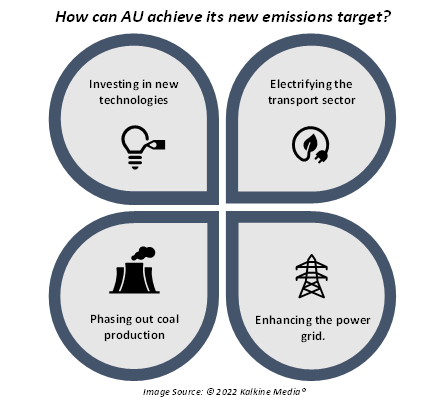Highlights
- Australia has recently signed a new carbon emissions target to boost its action on climate change.
- The new government has committed to a 43% reduction in the country’s emissions by 2030.
- It seems crucial for businesses to invest in environmentally friendly technology to ensure a seamless flow towards a climate-conscious economy.
Australia has long been criticised for not implementing appropriate climate change policies. More specifically, the nation’s leaders have been slammed time and again for not being proactive in their approach to dealing with a wider climate crisis. However, with the Anthony Albanese government coming into power, this narrative might change as the new government is taking active measures on climate change.
ALSO READ: How is Australia tackling the climate change crisis?
Prime Minister Albanese recently signed an updated version of Australia’s nationally determined contribution towards the UN’S framework convention on climate change. The signing took place in Canberra on Thursday, June 16, alongside Climate Change Minister Chris Bowen as well as business groups, trade unions and energy advocates.
The updated commitment includes a 43% emissions reduction by 2030, providing more certainty about the country’s motive. Alternatively, the previous government had given a much lower commitment of 26 to 28%. The new government’s emissions reduction plan has cemented the country’s image among the leaders in the climate change agenda. Australian leaders believe that the updated submission also sent a strong message to the world on climate action, apart from contributing to the ongoing efforts.
GOOD READ: How come Canberrans' electricity bills fall while most Aussies' see power bills soaring
Why should Australia buckle up to combat climate change?
It seems imperative for Australia to match pace with the global action towards climate change, which is moving at lightning speed. Years of minimal action on climate change have made Australia lag in this global movement. Alternatively, many economies have developed and incorporated solutions to climate change.
Now is the time for Australia to create innovative solutions to the climate crisis and make use of all opportunities that come its way. The new target is in line with what Anthony Albanese had promised in his election campaign. However, some experts believe that even the bumped-up commitment may not be enough to reverse the years of missing climate change action.
Some analysts believe Australia’s 43% target is consistent with 2 degrees Celsius of global warming. However, they think that Australia needs to set a target of about 60% emissions reduction to reach a lower level of global warming. However, the Albanese government’s latest move is hailed as the first step in Australia’s efforts to curb climate change.
ALSO READ: Why sending parcels may cost Aussies more?
New technologies on the horizon
Australia’s solid promises to the UN might fall flat if the country’s businesses and households do not equally participate in the national commitment. Huge investments in greener and environmentally friendly technology would be needed to fulfil the new commitment.
Approaching the climate crisis with open arms could allow greener industries to flourish while creating new jobs for citizens. Additionally, the new target provides a longer horizon for businesses to invest in climate action rather than looking at it as a governmental policy.
However, the biggest problem that seems to be prevailing in Australia is the export of fossil fuels. Australia is highly dependent on its fossil fuel exports, and phasing out coal production is not on the government’s agenda for now. No clear guideline has been given regarding how fossil fuel industries would be reshaped to align with the nation’s new target.

Companies should be encouraged to decarbonise their operations and adopt a cleaner manufacturing mechanism. Some evidence of the same is already visible in the market. Mining company BHP has recently decided to close New South Wales’ largest coal mine by 2030 after failing to find a buyer for the same.
Another significant effort shaping up in Australia is the national move towards electric vehicles. The transport sector is one of Australia’s largest contributors to greenhouse gases. Thus, increased usage of electric vehicles could help diminish much of the national greenhouse gas emissions. Notably, Australia is already embracing measures to make the power grid compatible with renewable energy following the recent energy crisis.







